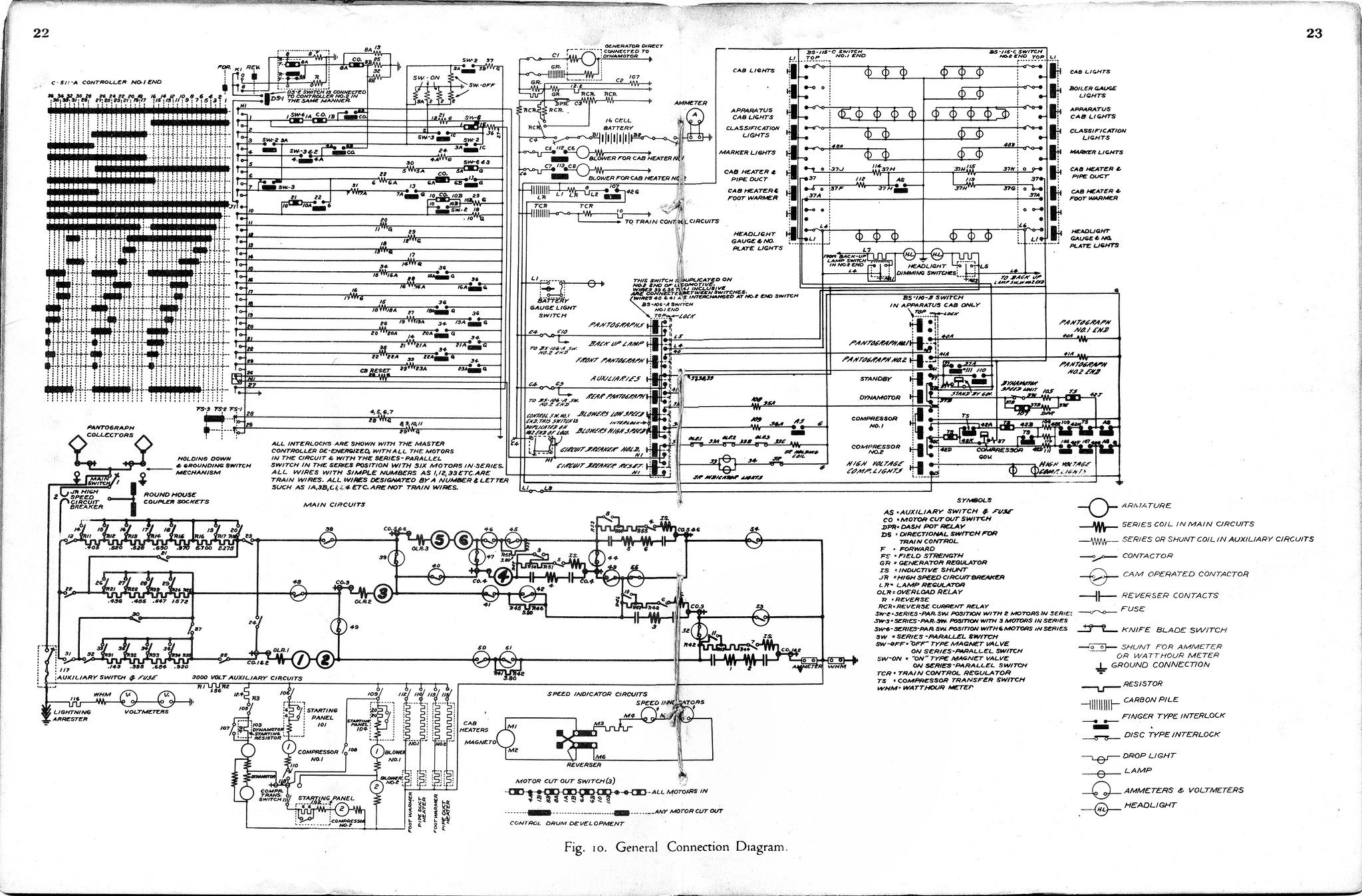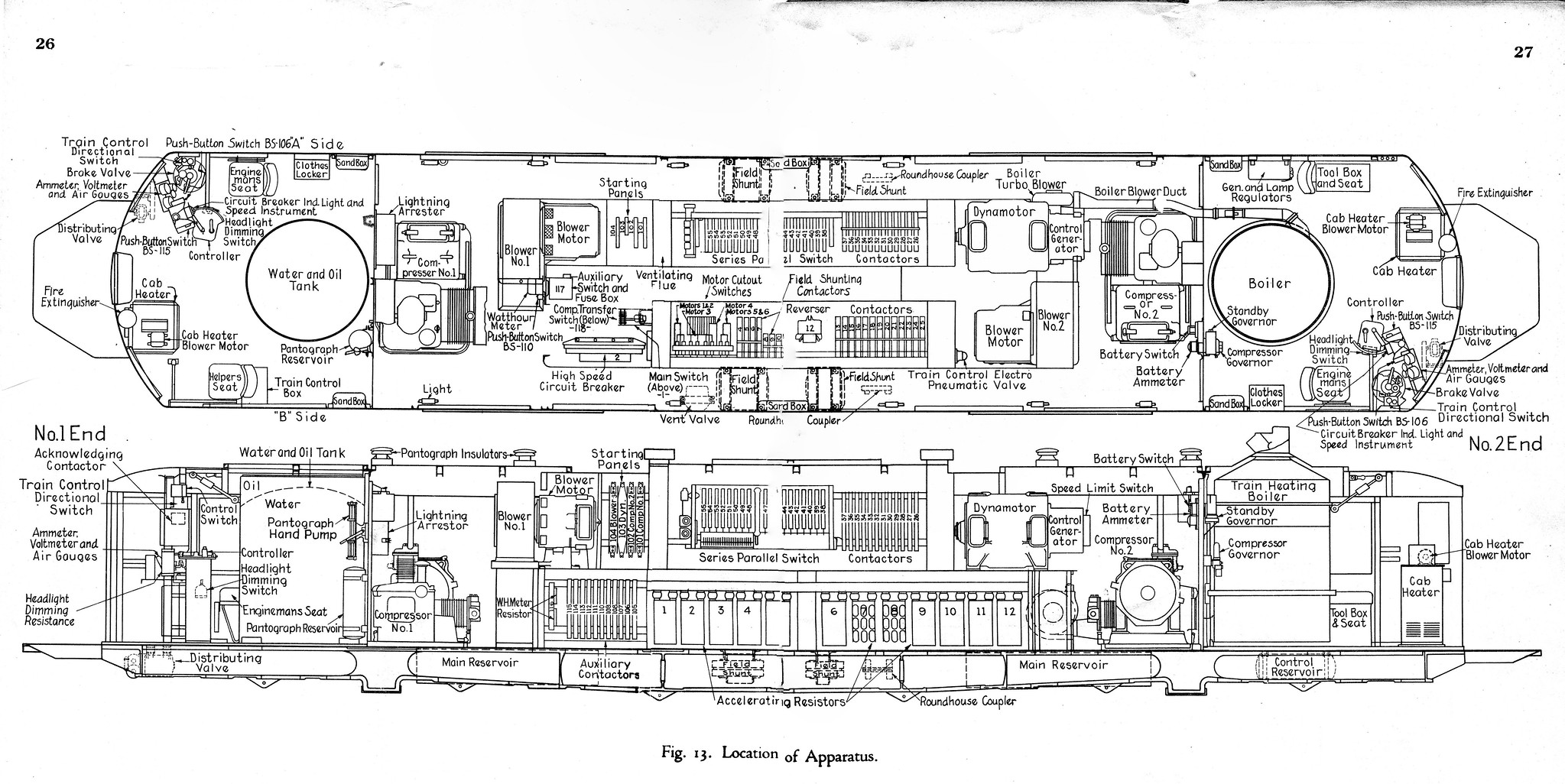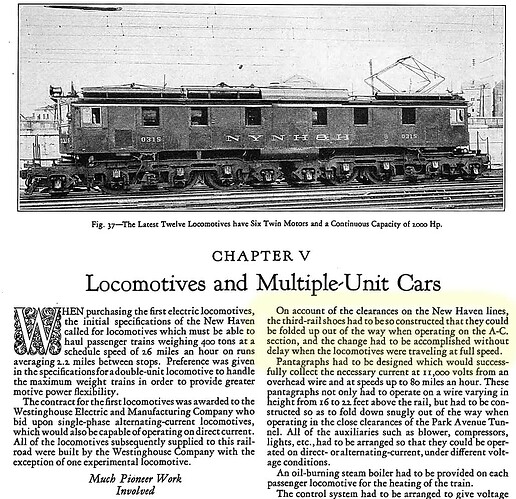Hey guys I have been looking up some diagrams of New Haven electrics on the net and I did come across diagrams of EP1,EP3 and EP4 however they haven’t labelled the pantograph and third rail controls so could anyone shed some light as to how these locomotives operated their pantographs and how they selected which panto to use and also how they operated the third rail collector shoes.
Thanks, regards
I can’t answer all that, but they used the rear pantograph. Thew locomotives (but not the MU cars) also had a small, fixed DC pantograph that was higher in elevation than the lowered regular pantograph that connected with an overhead rail in GCT to bridge spots where the 3rd rail shoes would miss. The NYC eye tries also had this, and the first 30 DFL9s did as well. Originally the 3rd rail shoes were retractible but in Metro North equipment they are fixed in place.
The 11,000 volt AC pantographs could be lowered and operation switched to the 600 volt DC third rail shoes while running. Suffice it to say that the control circuitry for this changeover was interlocked to prevent any ‘crossover’ of the current collection. As John mentions there was also the small DC pantograph for overhead collection where trackwork precluded third rail continuity.
While I do not have a wiring diagram of the EP-3 Passenger locomotives I do have ones for their immediate predecessor, the C.U.T. P-1a. Obviously there would be differences but I’m sure there is crossover in the designs used:
 P-1a_General Connection by Edmund, on Flickr
P-1a_General Connection by Edmund, on Flickr
 CUT_P1a_layout_0002 by Edmund, on Flickr
CUT_P1a_layout_0002 by Edmund, on Flickr
 P-1a_General Apparatus by Edmund, on Flickr
P-1a_General Apparatus by Edmund, on Flickr
There is some excellent background information about New Haven’s pioneering electrification here:
Hope that helps.
Ed
Huh! Is the switching between AC and DC done while the locomotive is running in an unpowered section?
NH EP-1 (NJICB/Tamac 1982)
My information comes from a paragraph on page 79 of When the Steam Railroads Electrified [Middleton, 1974] “Control circuits permitted transition from A.C. to D.C. operation without stopping. Interlocking controls prevented current-collection devices from being in contact with the D.C. third rail and the A.C. overhead at the same time”.
The above is from a June, 1924 publication from the Westinghouse Corporation.
I’d sure like to see what the exact procedure is. Since, I believe, there’s no way to ‘disengage’ a third rail shoe the locomotive would have to be clear of any third rail structure before raising the pans.
I believe the TurboTrain and the FL9s could also be ‘switched over’ on the fly (not to overhead, of course, but to the internal generator or turbine. I believe the FL9s also had specially designed third rail pickups that could run on under- or over-running third rail.
 NH FL9 #3012 311013 (4) by Rick Wright, on Flickr
NH FL9 #3012 311013 (4) by Rick Wright, on Flickr
The original FL9s did have a small DC pantograph for negotiating the GCT third rail gaps.
Cheers, Ed
Suffice it also to say that this isolation was not always effective, and transfer to (or from) 600VDC could be accompanied by a variety of bangs and fires. In fact more than one of the ‘lightweight trains of the future’, which did not use 11kV, had this trouble – Ed could tell that story better than I could.
Thanks for sharing these documents with me, have you got any more documents containing detailed operation of the pantographs from the same issue of Westinghouse cooperation from 1924 and also clarify whether new haven electrics used tap changers with universal motors under ac and rheostats under dc with third rail and universal motors as universal motors could run on both ac and dc.
Thanks
Regards

